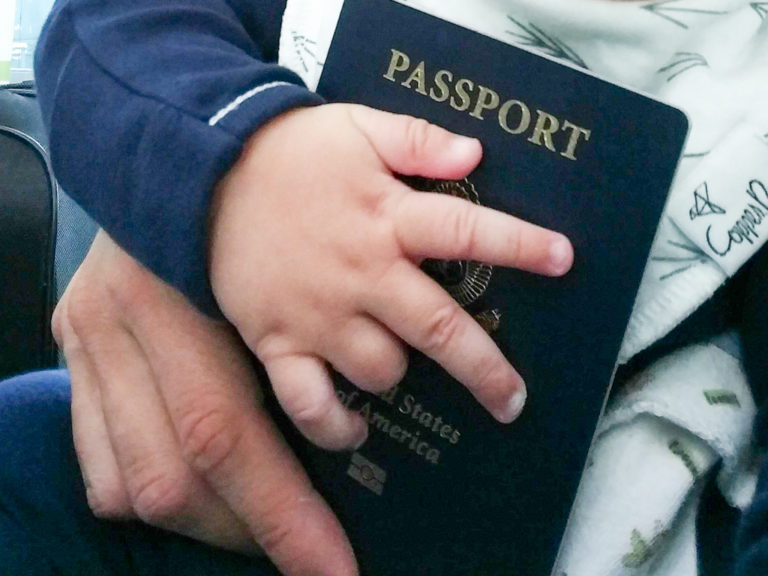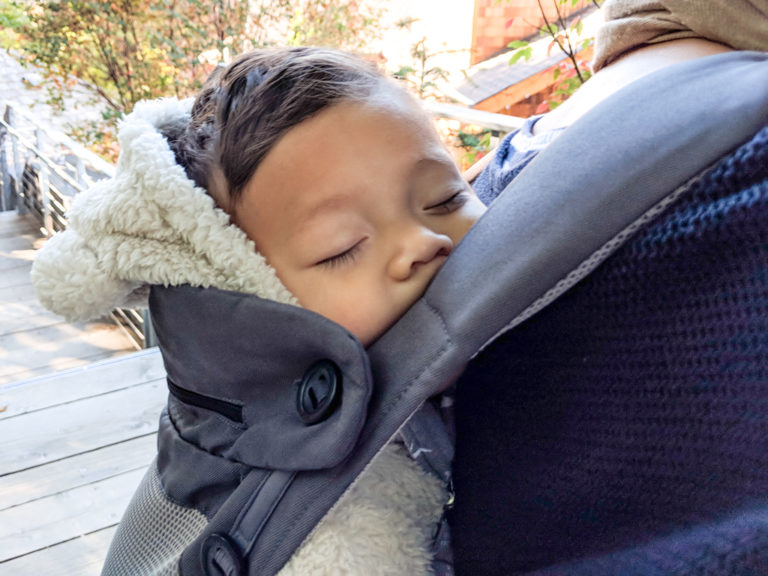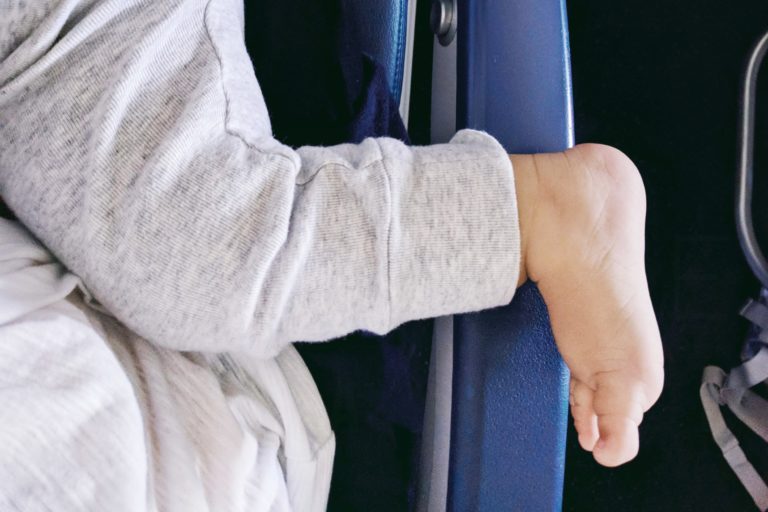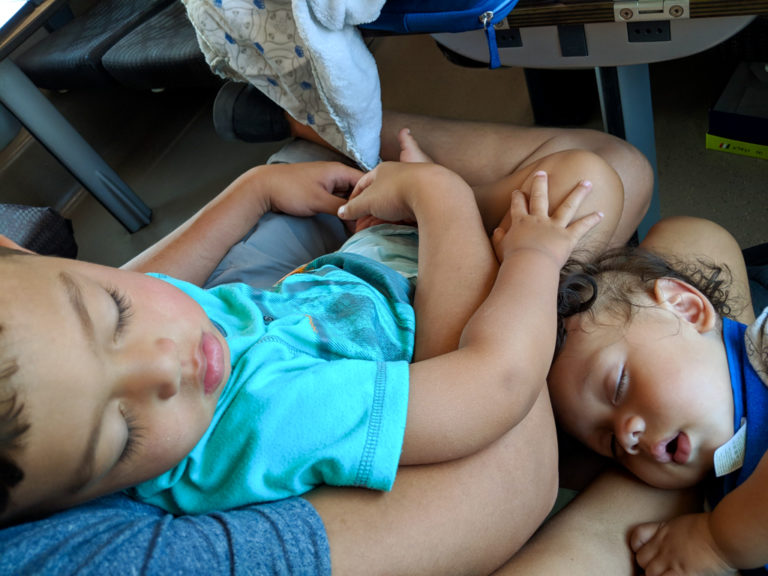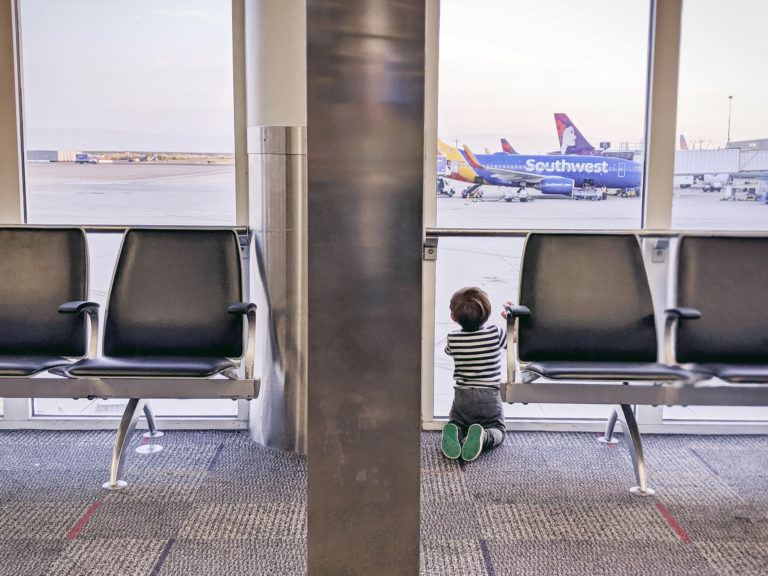Tips for surviving a long-haul flight with a baby or toddler
I blinked to offer my burning eyes some relief. I struggled to keep them open at hour 12 of our 17-hour long-haul flight. Elden at 15 months old was still bouncing around with no signs of slowing down. He didn’t cry, he wasn’t cranky, but he wouldn’t calm down to fall asleep. After hoarding half the plane’s blankets and trapezing them around our seats, we constructed a makeshift tent to block out the beeps and lights. Finally, 15 hours in, he fell asleep.
Are you thinking of flying halfway around the world with a baby or toddler? Don’t panic, I’m not trying to scare you. It doesn’t have to be like this, but I do want to prepare you. After several long haul flight experiences with our baby and toddler, I want to pass on some advice. These are some things we learned along the way that we wish we knew from the start.
At 7 months old, we flew 16 hours with squishy and smiley Elden to Japan. Great idea. When he was 15 months old, we flew 17 hours to Dubai. Bad idea. When Orlo was 6 months old, and Elden 2.5 years old we flew 14 hours from Panama City to Istanbul. We’ve done Cairo to Singapore, Fiji to LA and beyond. We’ve done 6-hour flights, 10-hour flights, 16-hour flights, and everything in between with our kids.
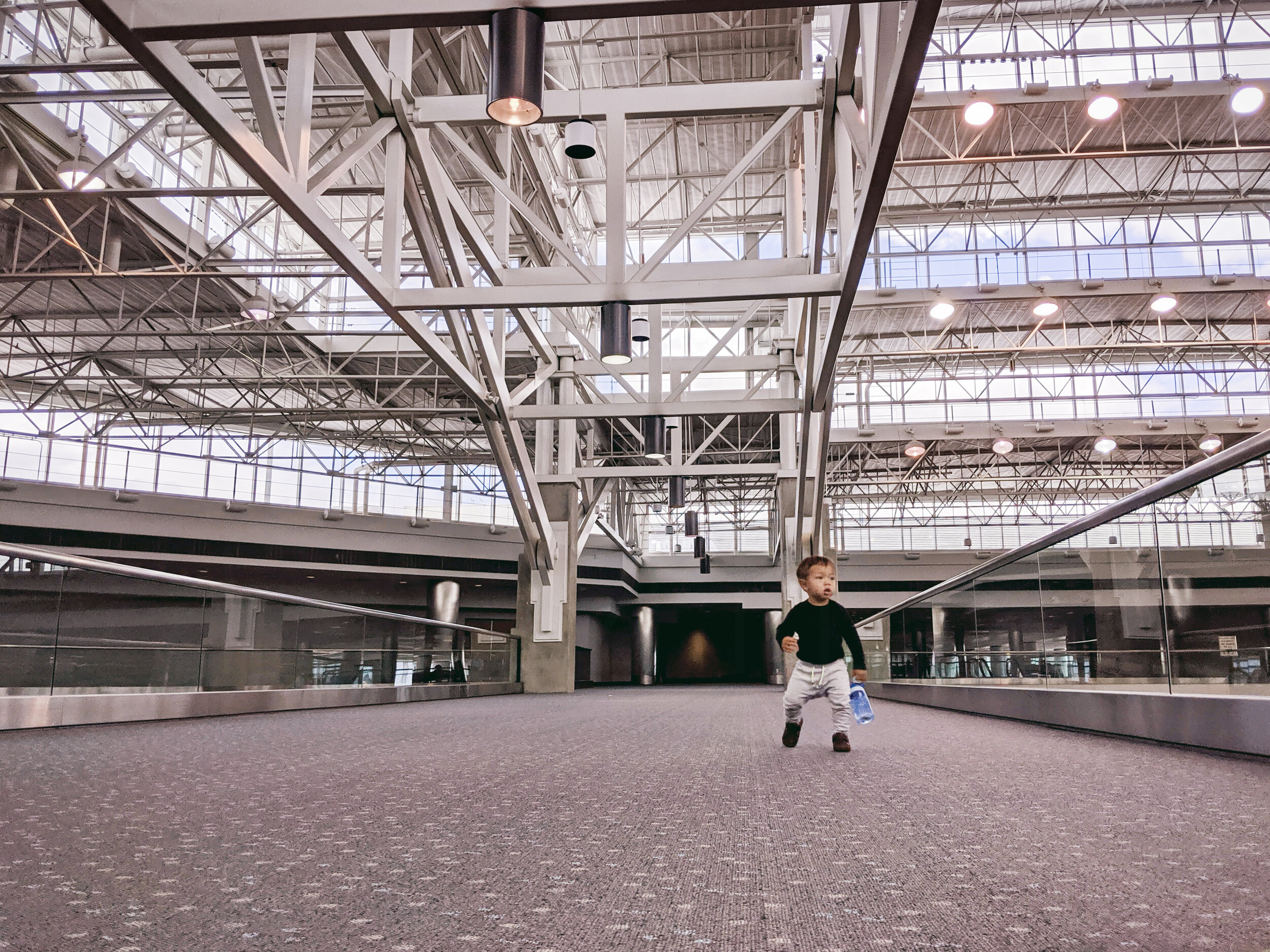
What’s a long-haul? Definitions vary slightly by country and airline but approximately a long-haul flight is 6-12 hours and anything over 12 hours an ultra-long-haul flight. Now, how do you survive so many hours in such a tiny space with little ones?
This article contains affiliate links. If you chose to purchase something, it will not cost you anything extra by using our link. We receive a very small commission which helps us maintain this site. For further details, you can read our disclaimer policy.
How to survive a long-haul flight with a baby or toddler
Adjust your mindset
My ultimate, number one, most important tip is to adjust your mindset. This applies to traveling with kids in general, and especially for a long haul flight. I plan and pack for a long-haul differently than for shorter flights. My mindset is completely different for a long-haul. For shorter flights I usually think about how many hours, how many more hours, it’s only been 20 minutes how?? I rarely check the time on a long flight, and if I do usually 3+ hours have passed.
I think of a long-haul as any other day, but we’re spending the day on the plane. I like to go through various routines like any other day, rather than simply trying to hang tight for a few hours. I find it helpful to break up the flight in this manner. We have playtime, we have reading times, we have nap times, we have walking times, we have snack times, we have meal times, we get ready for bed – change into pajamas, brush teeth, set up beds, etc. It won’t be the same as any other day, so don’t expect your baby to respond in the same manner as a regular day, but having some familiarity in routine and breaking up the flight helps.
Long-hauls are tough for adults, never mind for kids. Try to keep this perspective in mind, and do what you can to help them through it.
Don’t miss: What you must know before flying with a toddler in a pandemic
Sleep
This is a tip for before your long-haul flight. Try to be well-rested heading into your long-haul flight with kids, because you will unlikely get enough sleep during the flight itself.
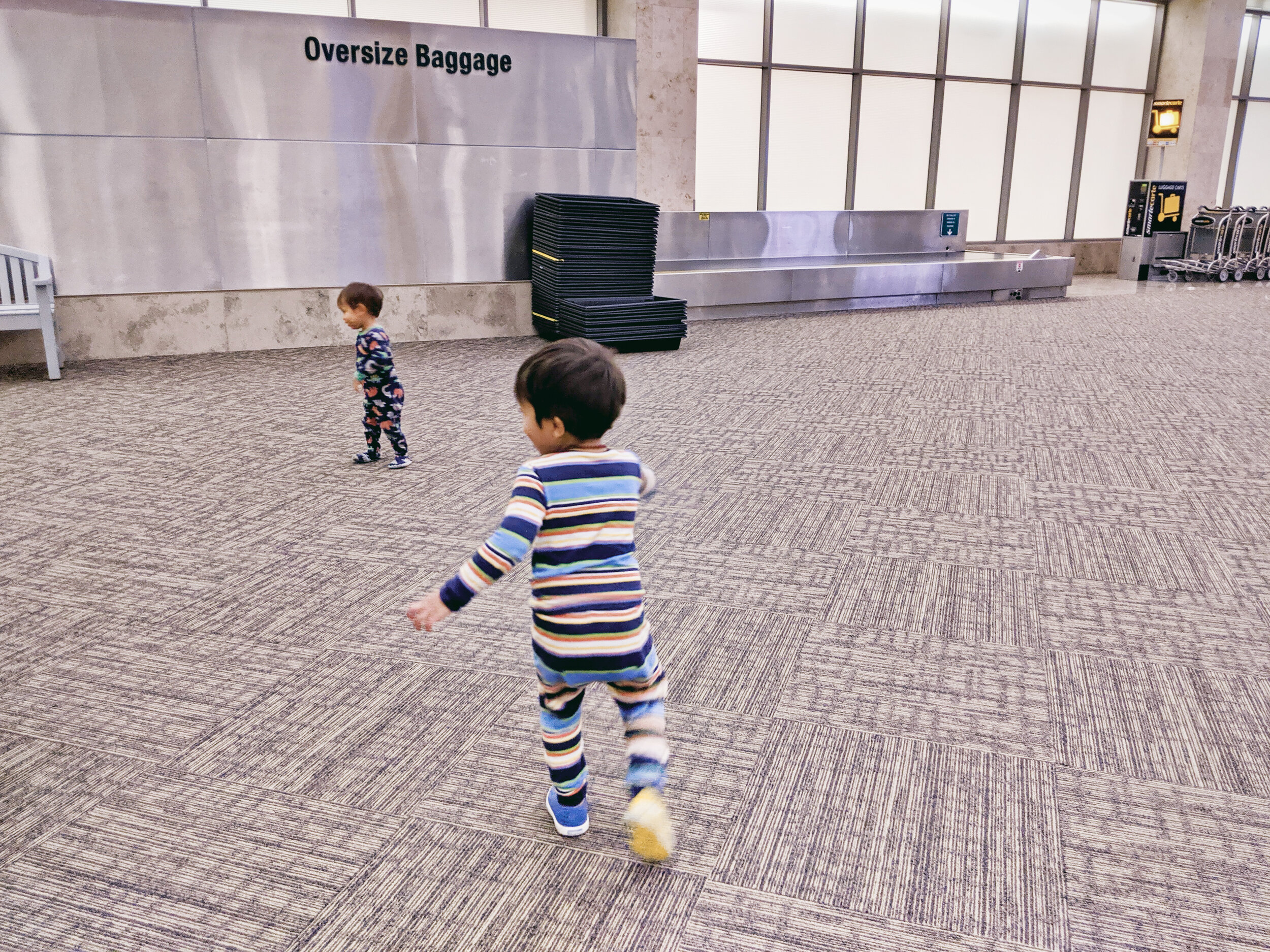
Get up
It’s much more acceptable to get up and stay up for a while on long-haul flights. You usually see people standing, stretching, and walking the aisles because it is too long for anyone to stay seated. Everyone has to get up and stretch their legs, it’s unhealthy not to. This works well with toddlers because they, more than anyone, need to move. Let your toddler get up, walk up and down and around the aisles. Long-haul planes are bigger and there’s more space to walk.
Book a bassinet, or don’t
I have a love/hate relationship with airplane baby bassinets. They’re these clever little bassinets that hook to the wall and then your baby has a bed to lie down in on the flight. They only accommodate babies up to a certain weight and length (varies by airline). You can request one for a lap infant and don’t have to pay extra for this, but you should call well in advance of your flight to reserve the bassinet because there are only a few available per flight.
- Pros – The bassinet is great to give your arms some relief on a long flight. Ten plus hours of holding a baby is tiring. You get to sit in the bulkhead seats as this is the only place the bassinets attach, so you get extra legroom which is extra floor play space for your baby/toddler. If your baby stays asleep in it, you have more freedom and space to get up, eat with two hands, sleep, etc.
- Cons – Typically the armrests in the bulkhead seats do not move, and the trays/screens might fold out from the armrests. On regular flights, we always have our armrests on the plane up so we can move and share seat space. Every airline, except one, wanted us to pick up the babies whenever the seat belt sign came on for a bit of turbulence. For some flights, this was very frequent on/off for little bumps. I know safety is most important, but when you finally get a baby asleep you try to keep them asleep not pick up, put down again and again.
- Airplane baby bassinets are a great idea, and I do recommend trying one out for your first long-haul flight with a baby at least to decide if they help your family.
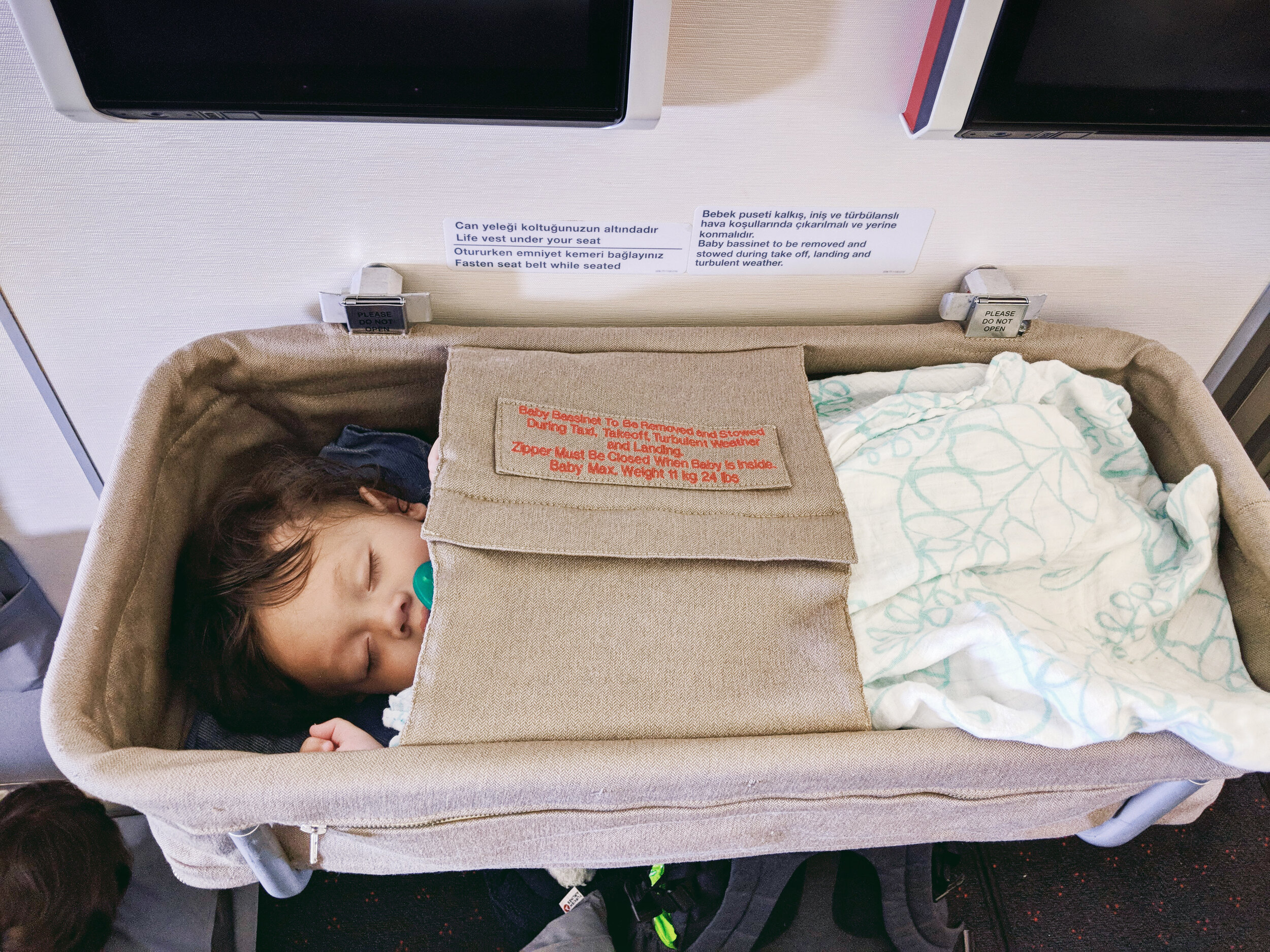
Bring snacks on snacks
Car ride? Grocery store? Doctor? Snacks. This is how we survive everything. The same rule applies to survive a long-haul flight with a toddler. Snacks on snacks.
They feed you on long-haul flights, more than any other type of flight, but the timing may not always align with your child’s hunger and the food may not be to their liking. You can get by on a shorter flight, but you don’t want to be stuck for so many hours with not enough food for a hungry toddler. You can request a child meal, but make sure to indicate this preference when you book or call in advance of your flight (like how you would request a vegetarian or special diet meal).
Bring Extra Clothes
Bring a change of clothes for everyone. You don’t want to stay in a shirt your baby blew out on only 2 hours into a 14-hour flight. Bring pajamas, extra shirts, plenty of diapers, etc. Usually, you still get free checked luggage on a long-haul flight, so cabin bin space is plentiful as everyone isn’t trying to crowd all their stuff on board. Don’t overpack where you can’t manage, but do make sure you have enough to keep everyone comfortable in case of any messes.
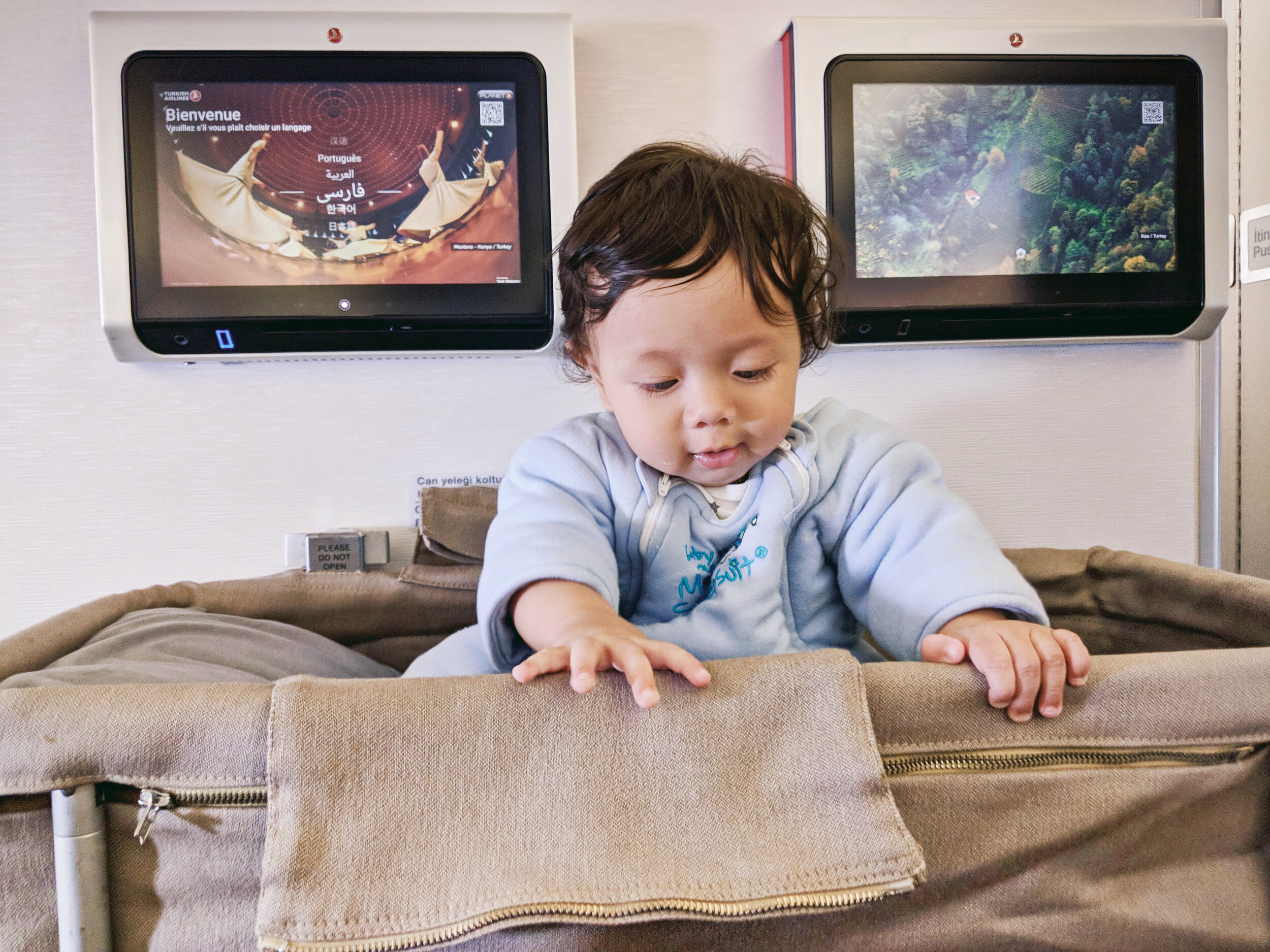
Bring sleep accessories
Pack the special blanket, stuffie, or lovie. If it’s small enough, bring any comfort item to help your baby sleep on the plane as if it’s nighttime not only a nap. Bring a portable white noise machine. The plane has natural white noise, but there are also beeps, announcements, and talking that can cause disruptions. A mini white noise machine can help block out those interruptions to keep your baby asleep.
A blackout cover can also be helpful. It is NOT fun if you finally get a baby asleep and then the lights turn on, they start pushing carts and the plane starts buzzing for dinner. The CoziGo is one of the most clever baby travel items I’ve come across. It’s like a mini breathable blackout tent specially sized to fit over airplane bassinets and strollers, plus it folds up really small. We draped blankets and nursing covers, which worked in a pinch, but it was tougher to make these stay up and off our baby’s face. The CoziGo pitches and stays up like a tent which makes all the difference.
If your child will have their own seat, an inflatable airplane footrest pillow can be a great way to keep them more comfy. You blow it up and it fills in the floor space gap between the seats and is level with the seat thereby extending it. If the child is young enough or small enough they may even be able to lie flat this way. We like the Koala Kloud pillows and you can find alternatives as well.
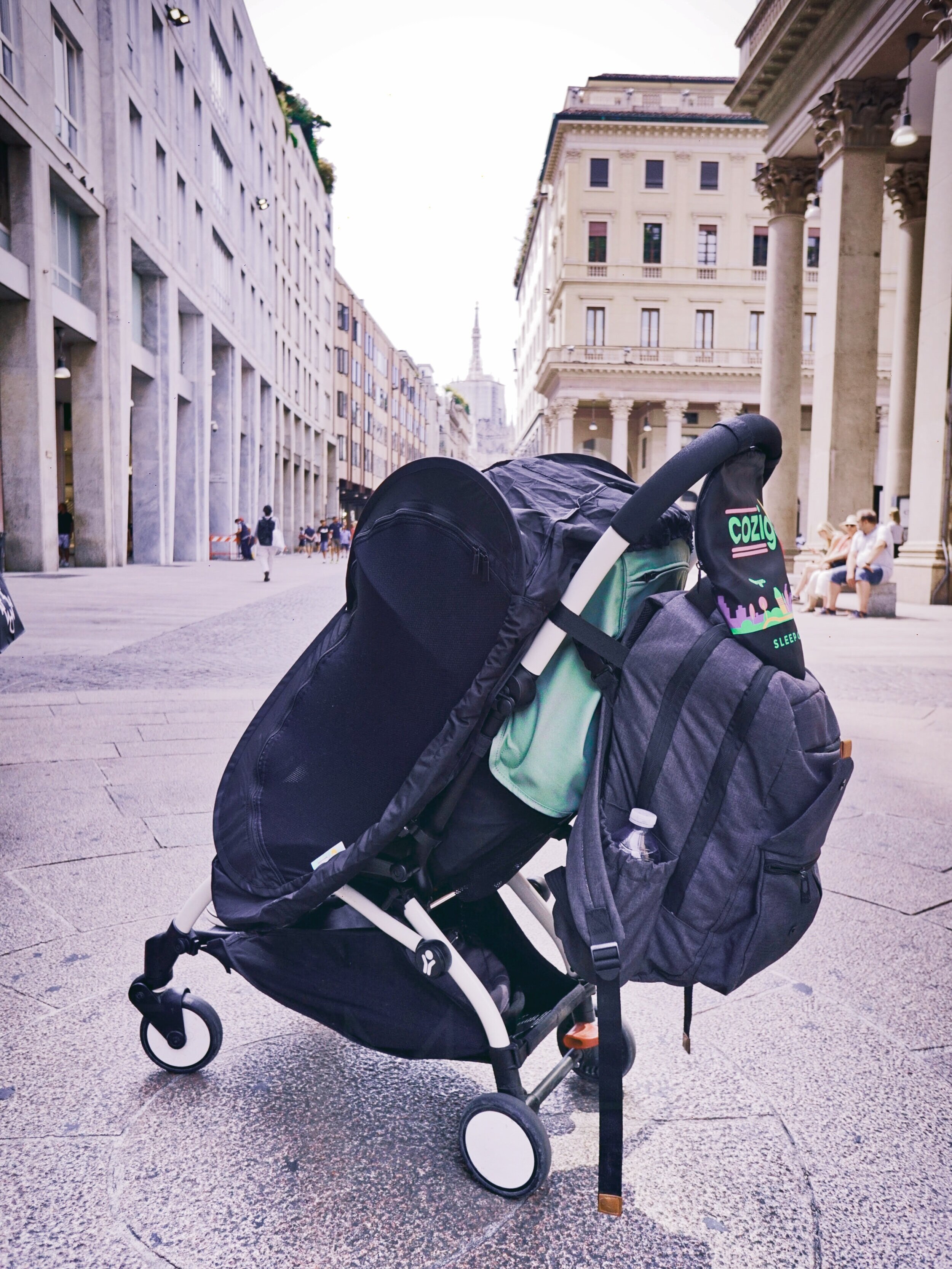
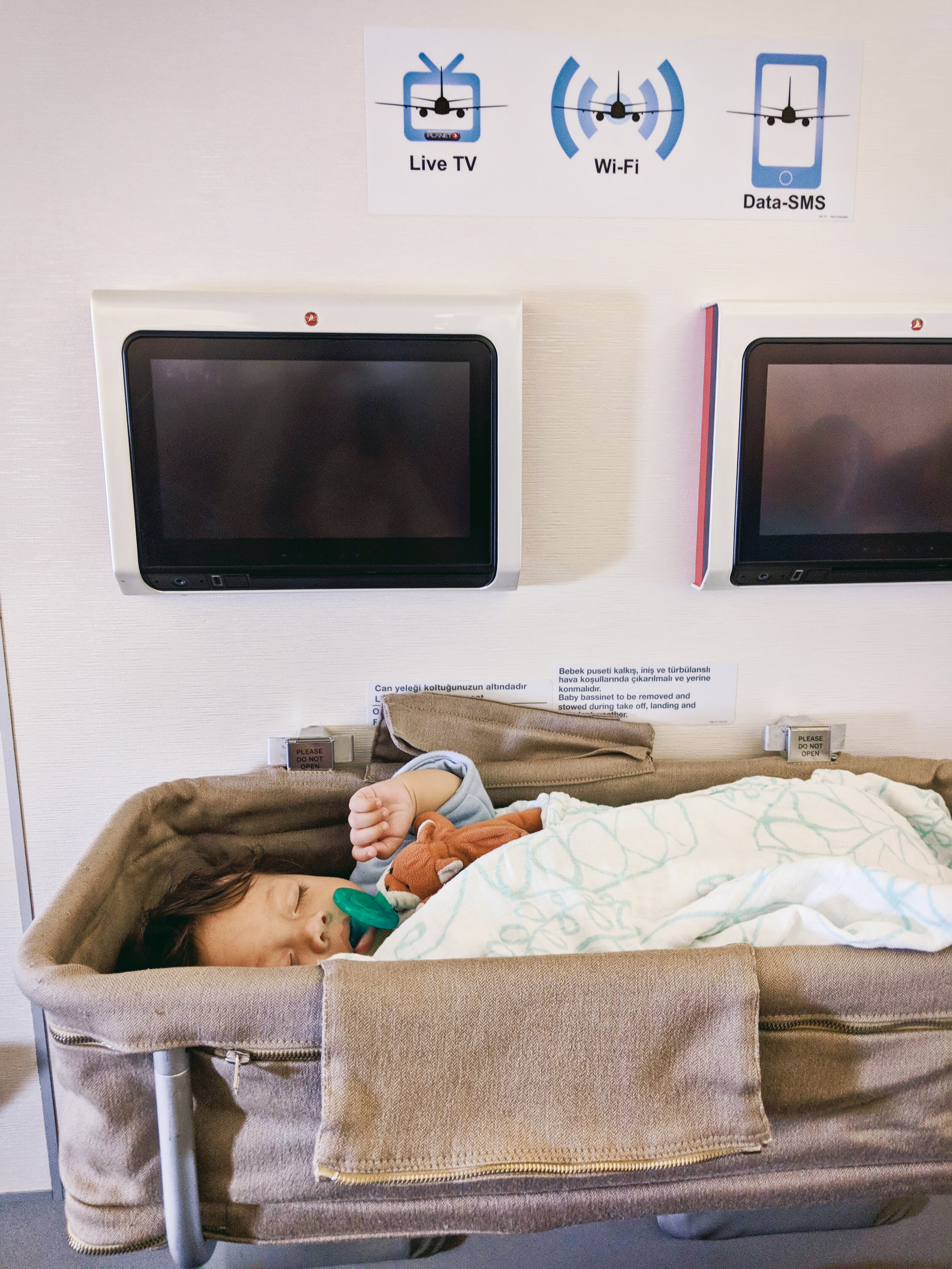
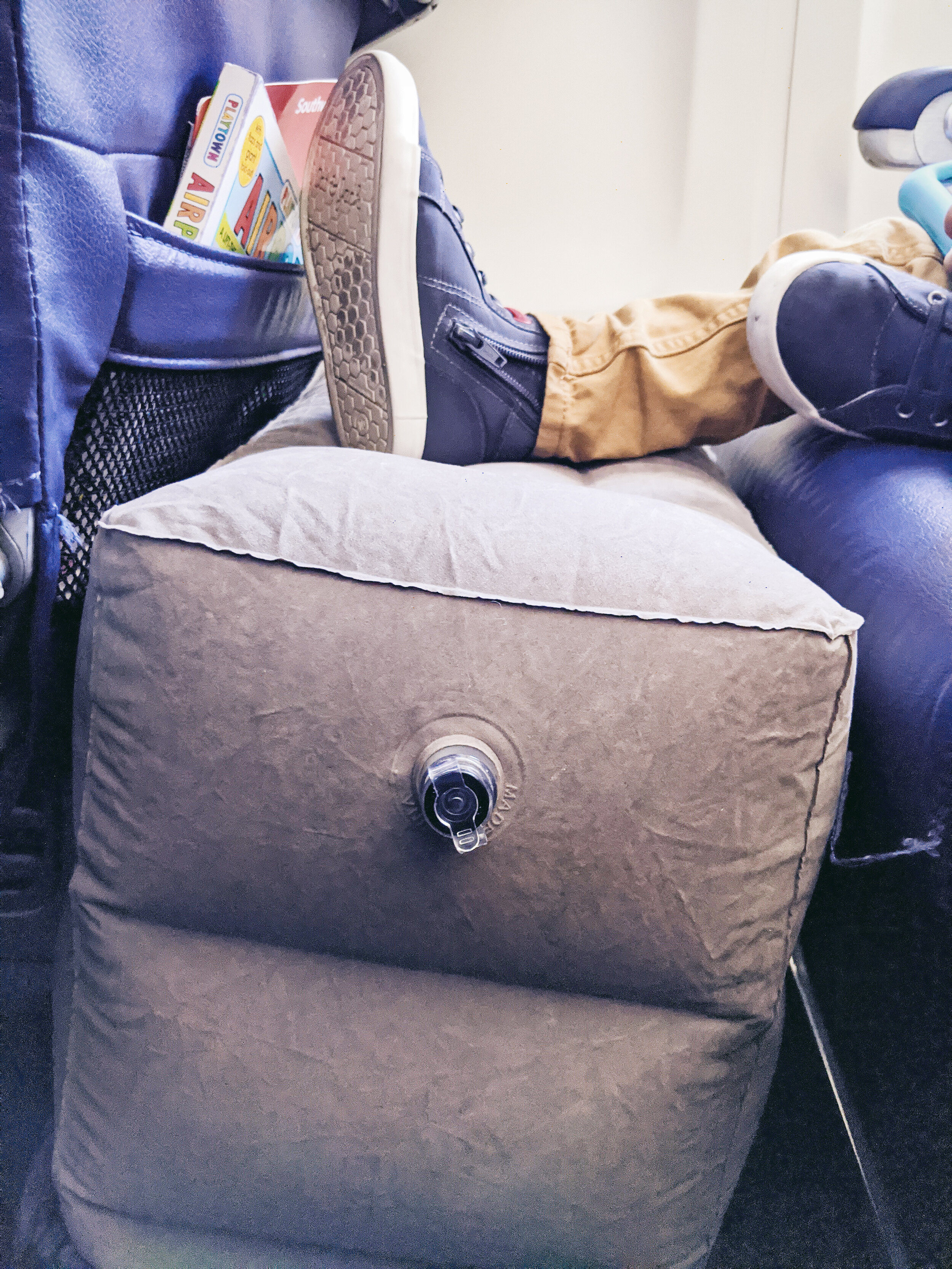
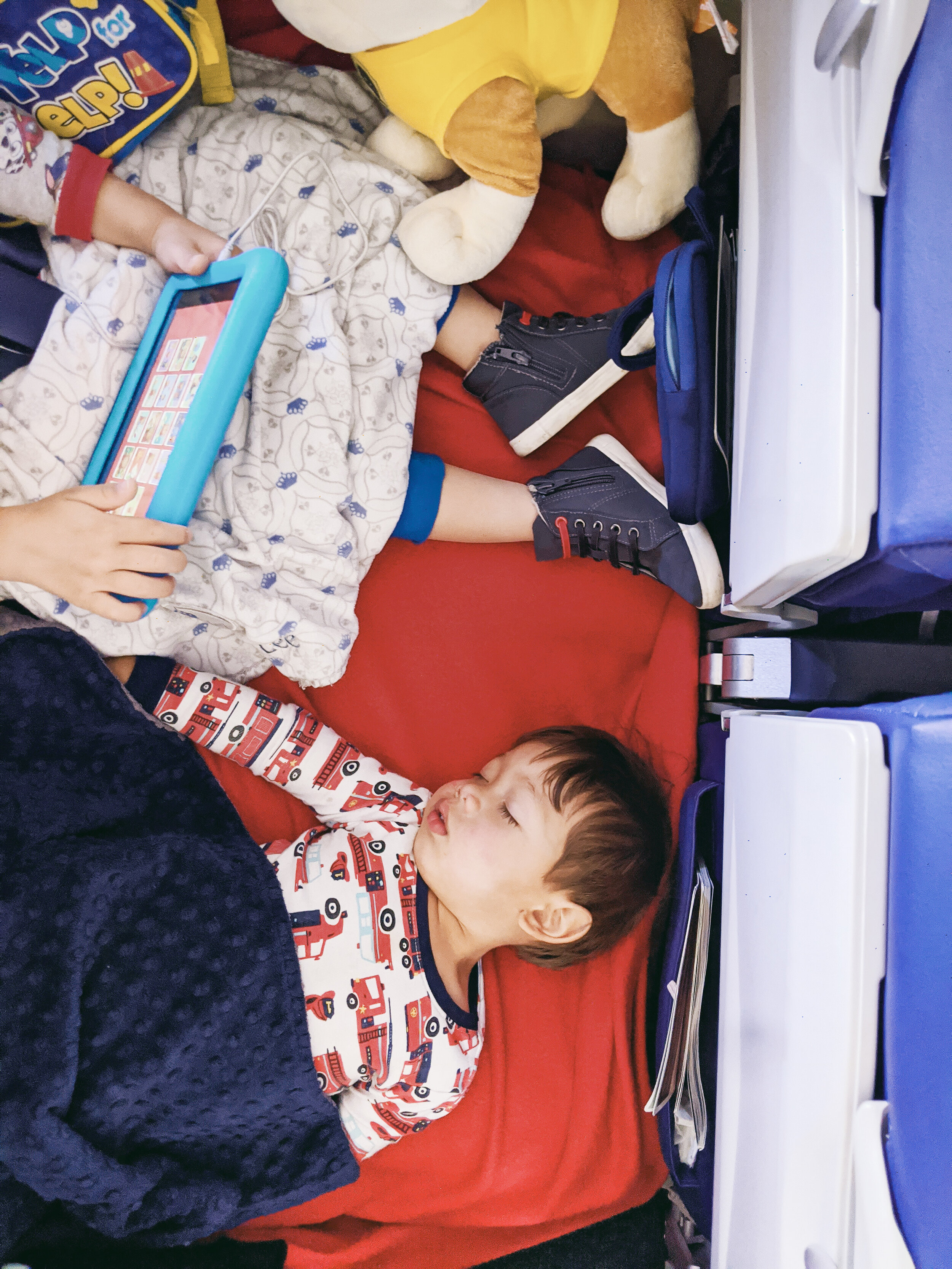
Buy an extra seat
If you’re willing to spend the extra money, even if the baby won’t have a car seat or stay in their seat, the extra space can be worth it. We’ve never bought an extra seat, but luckily ended up with one a couple of times and it made a big difference.
Bring toys & books
Bring some items you know will entertain your baby or toddler. Also, bring some new things as the novelty should at least keep them amused for a bit. Long-haul planes typically have built-in screens at each seat (though some are phasing out) with kid-friendly entertainment. This can be helpful for older toddlers, but you may want to bring your own tablet if you want to offer or restrict very specific programming for your child. Don’t forget child headphones since the airline ones are adult-sized. Some airlines (Turkish Airlines, Emirates, and more) provide a little toy/activity entertainment pack for little ones. Check out some of our favorite plane toys here.
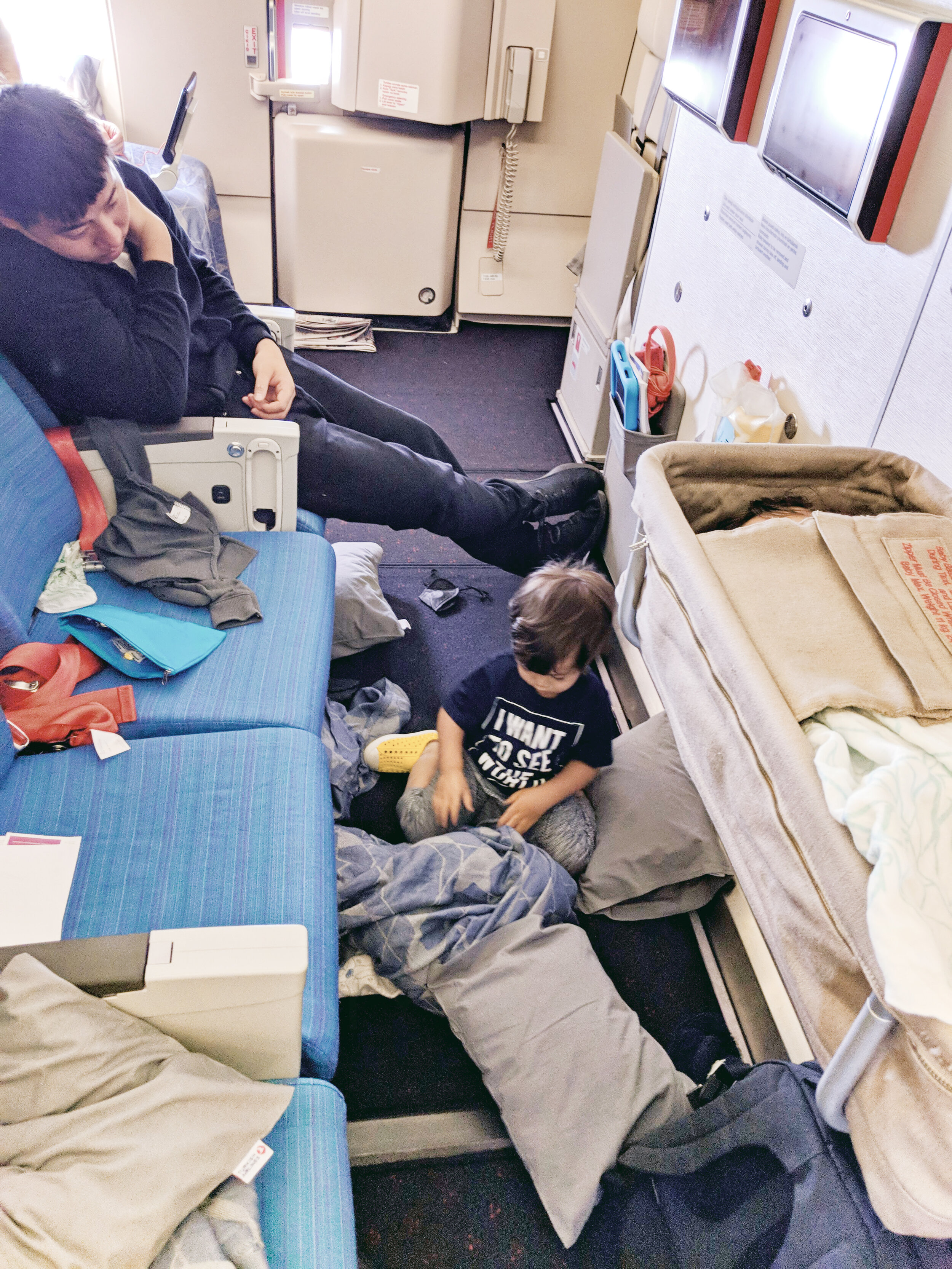
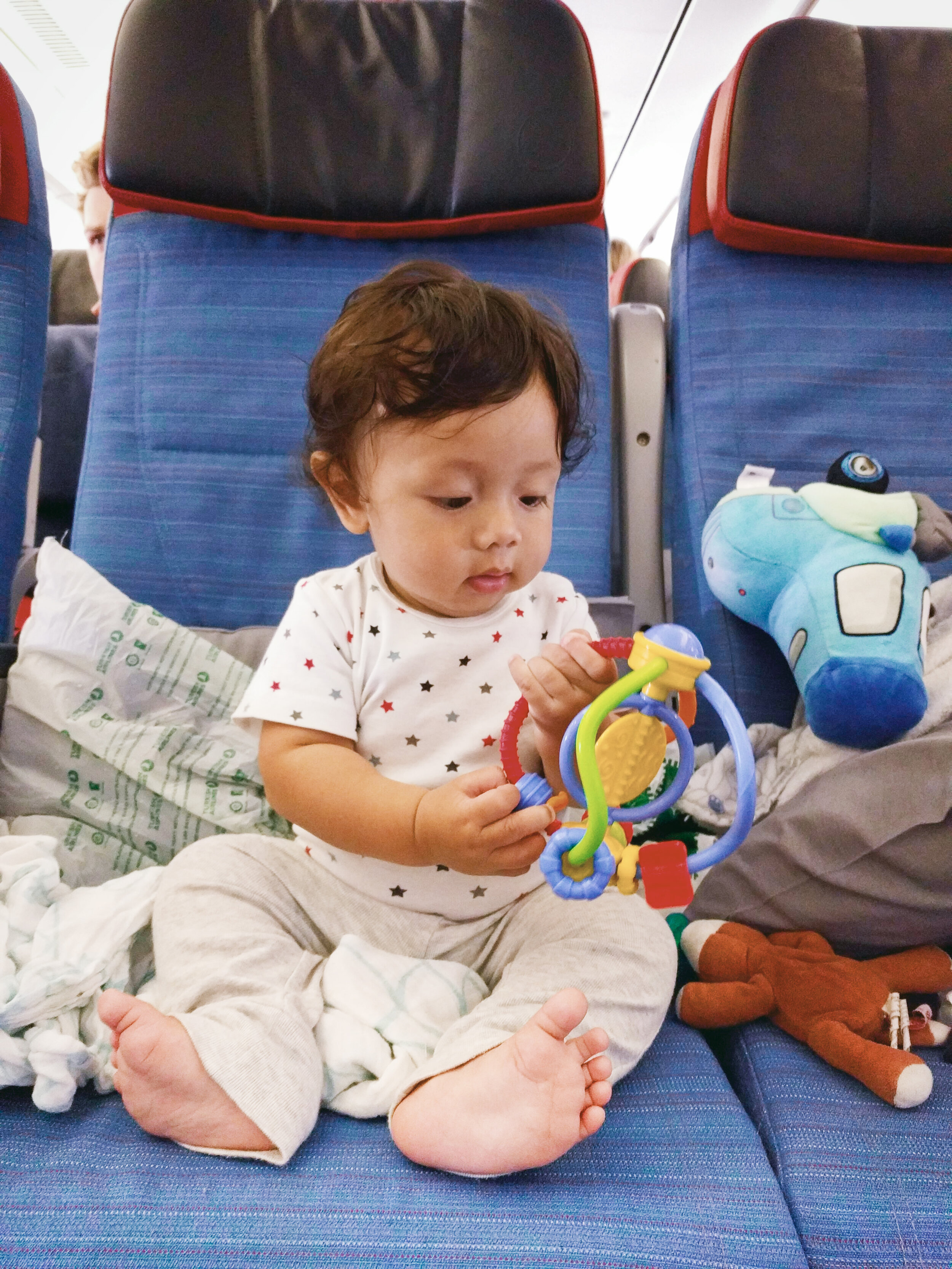
Use your baby carrier onboard
There is a lot of stimulation for babies on an airplane. Some babies shut down and sleep easily with excess stimulation, and others like mine are further energized by it. When Elden was younger, I found if I popped him in the baby carrier and put the headrest clip up (horse blinders), he would calm down and fall asleep. A carrier can also be helpful to walk the aisles with your baby, offering them a distraction but giving your arms a rest.
Let people help
If others offer you help, take it! This could be something as big as someone else willing to walk your baby up and down the aisles. Or could be something smaller like someone smiling and playing peekaboo with your baby across the aisle. I had a tougher time letting go and allowing others to help as a first time mom, but the second time around I learned quick. Random strangers have amused, distracted and calmed our baby more than once. If they’re offering, they really mean well and want to help.
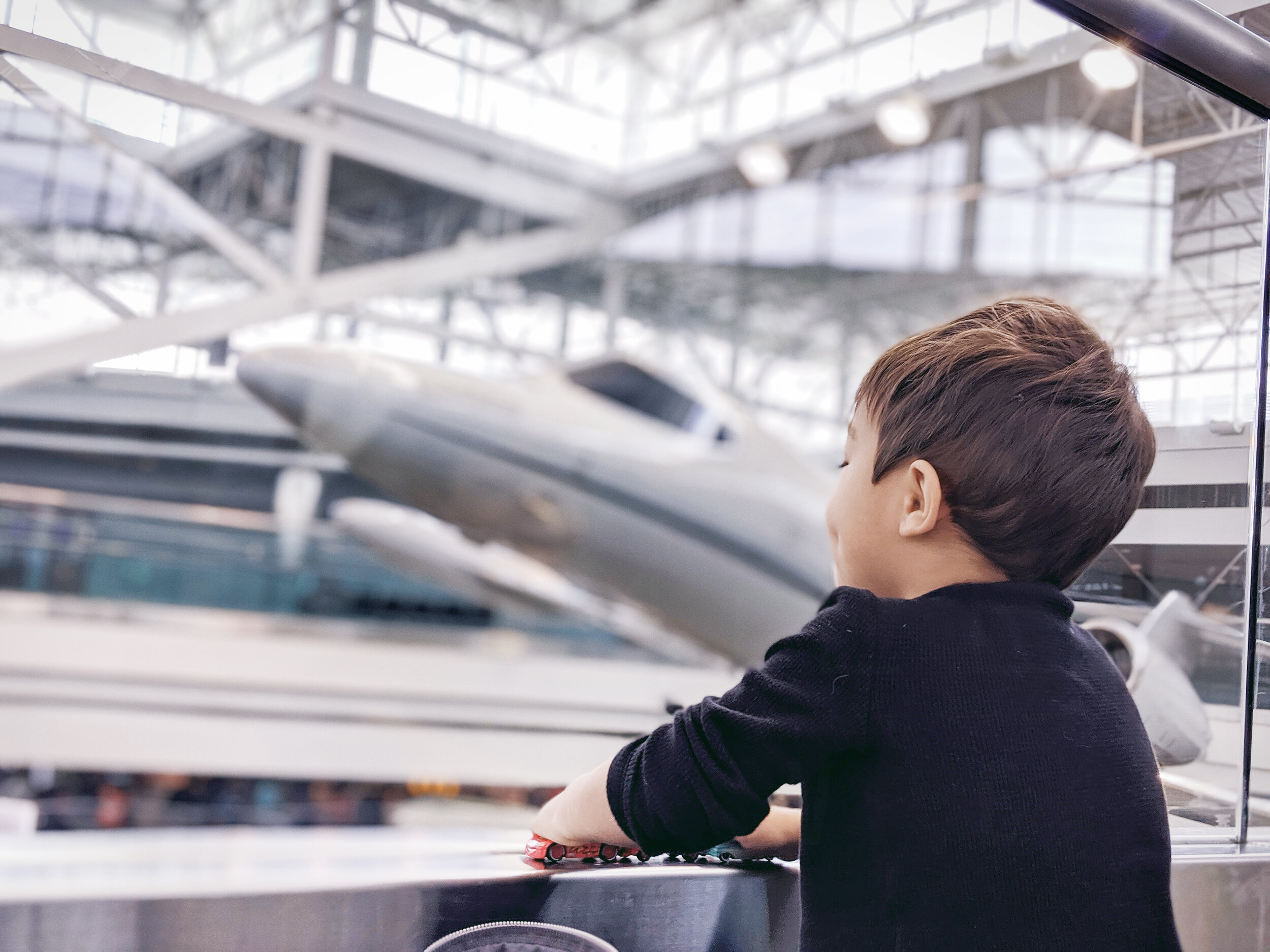
Your baby or toddler’s age will impact your long-haul flight experience and how you should prepare and approach it too. Check out how age differences have impacted our flying with baby experiences.
Surviving a long-haul flight with a baby or toddler is not easy, it takes work. You will probably come out the other side exhausted, but we still feel the travel experiences are well worth the effort. Even after Elden stayed awake for over 15 hours on our return from Dubai, it was still worth it. The flight was rough, yes, but the experiences of that trip are some of my favorite to date. Going in with the right mindset and preparing accordingly can make all the difference.
Related Reading
- Best tips and favorite toys for entertaining babies and toddlers on a plane
- How to determine if a travel destination is baby-friendly
- Surprisingly baby-friendly travel destinations
- How to help your baby adjust to a new time zone
- Preparing for your baby’s first flight
- How early is too early to travel with your baby?
- Applying for baby’s first passport
Pin it for later
Don’t forget to pin this for future reference, and share it with any friends!


